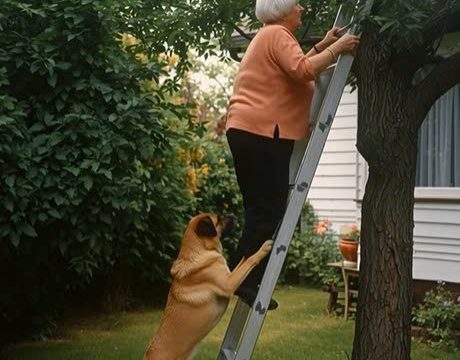Since I was a child, I’ve been haunted by the thought of something hiding under my bed. It wasn’t just an ordinary fear—it was one of those deep-rooted anxieties that seems to grow with you. The old creaky floorboards, the shifting shadows cast by a nightlight, and even the occasional gusts of wind rattling my window all worked together to make bedtime feel like a test of courage. I would pull the blanket over my head and tell myself that monsters weren’t real. Adults always said it was just imagination. Still, the fear never completely left me.

As I got older, I tried to dismiss those feelings as childish nonsense. Rationally, I knew there was nothing under the bed but maybe some lost socks, a few forgotten toys, or the dust that always seemed to collect no matter how often I cleaned. Yet sometimes, even in adulthood, the unease would return. When the house was especially quiet or when I felt particularly vulnerable, that old sense of dread crept back in. It made me wonder whether some fears aren’t meant to vanish completely but instead remain buried in our subconscious, waiting for the right moment to surface.
Last night brought that fear back in full force. I had just turned off the lights and settled in when I heard something unusual. At first, it was faint—a soft rustling sound, almost like fabric being brushed against itself. I froze instantly, listening carefully. For a moment, I wondered if it was simply the sound of the sheets shifting as I moved, but the noise came again. This time it was clearer, more deliberate, as though something beneath my bed was trying to make itself known.
My heart pounded, each beat echoing in my ears. I tried to think logically. Maybe it was just the house settling, or maybe a draft had pushed something across the floor. Still, doubt crept in. What if it wasn’t just my imagination? What if my childhood fear had some truth to it after all? The idea of actually confronting something under the bed sent chills through me.
I debated my next move. Part of me wanted to jump up, flip the switch, and flood the room with light. Another part of me thought it would be better to ignore the sound entirely, pull the blanket tighter, and hope that the noise would fade. That inner child who believed in monsters whispered warnings in the back of my mind, urging caution. But curiosity is a powerful force, and eventually, it pushed me into action.
With shaky hands, I reached for my phone on the nightstand. The glow of the screen lit up the room faintly, and I switched on the flashlight feature. Taking a deep breath, I leaned over the side of the bed. For a moment, I hesitated, staring into the dark space below. Then, summoning my courage, I shined the beam underneath.
Relief washed over me almost instantly. Nothing unusual was there—just a couple of dust bunnies and an old sock I had long forgotten about. The empty space should have brought complete comfort, but oddly, it didn’t. Instead, I was left with a lingering sense of unease, as though the presence I had imagined hadn’t disappeared entirely. It was a reminder of how powerful the mind can be and how difficult it is to completely shake off fears planted early in life.
As I lay back down, I thought about how universal this experience is. Nearly everyone has felt afraid of what might be lurking in the dark at some point. For children, it often takes the shape of monsters, shadows, or imaginary figures. For adults, it sometimes shifts into worries about safety, intruders, or simply the stress of life itself. Yet the feeling is the same: an unexplainable tension that keeps us alert, our senses sharpened by uncertainty.
Psychologists often explain this phenomenon as a survival instinct. Our ancestors needed to be cautious in the dark, where real dangers often hid. Even though our modern bedrooms are safe, the instinct remains hardwired into our brains. That faint sound at night, that unexpected shadow, or that uneasy silence triggers the same old response: fear of the unknown.
What fascinated me most about last night’s experience was how quickly imagination filled in the blanks. A small sound became a possible intruder. A simple shadow seemed to stretch into something threatening. It wasn’t reality creating fear—it was my perception. In that way, the monster under the bed was never real, but the fear it created absolutely was.
By morning, the room looked as it always did—bright, ordinary, and safe. Sunlight streaming through the curtains made it hard to believe I had been so shaken just hours earlier. Yet the feeling stayed with me, not because I believed something had truly been there, but because of the reminder that fear is a natural part of life. It doesn’t make us weak. It makes us human.
So, what should I do about the thought that someone—or something—might be under my bed? The logical answer is simple: clean the space regularly, remind myself that nothing is there, and accept that the noises of the night are just part of living in a home. But the deeper answer is to acknowledge that fear itself is part of the human experience. It’s okay to feel it, and it’s okay to admit that sometimes our imagination gets the better of us.
That’s the strange truth about childhood fears. They never really leave us. They transform, evolve, and take new shapes as we grow older, but they still whisper to us in the quiet moments. And sometimes, when the lights go out and the house is still, those whispers feel real enough to make us check under the bed one more time.





